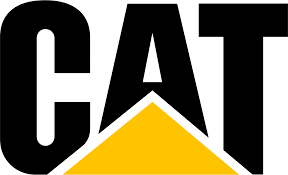This article describes how to test the air in the fuel of a Caterpillar 325C excavator
The air in fuel test procedure is used to check the air in the fuel. This procedure can also
help find the source of the air.
2023 CAT ET 2023A 2023C & 2019C Full Service Download and Installation Service
(1) Check the fuel system for leaks. Make sure the fuel line connector is tightened well.
Check the fuel level in the fuel tank. Air can enter the fuel system from the suction side
between the fuel transfer pump and the fuel tank.
(2) Install a 2P-8278 fuel flow pipe (observation instrument) in the fuel return pipe. If
possible, install a sight gauge in a straight section of fuel pipe that is at least 304.8mm long.
NOTE: Do not install scopes in right-angle elbows, safety valves, and check valves. As
shown in Figure 3-1-41, observe the fuel flow when the engine is started. Look for air
bubbles in the fuel. If there is no oil in the sight gauge, refill the fuel system. If the engine
starts, check the air in the fuel at various engine speeds. If possible, run the engine with the
assumption that there is air in the fuel.
Caterpillar 18 Digits Factory Password Calculator One-Time Calculate Service
(3) If too many bubbles are seen in the sight gauge, install a second sight gauge at the inlet
of the fuel transfer pump. If a second sight gauge is not available, remove the sight gauge
from the fuel return pipe and install it at the inlet of the fuel transfer pump. Observe fuel
flow when the engine is started. Look for air bubbles in the fuel. If the engine is started,
check the air in the fuel at various engine speeds. If at the inlet of the fuel transfer pump If
excess air is not seen, the air will be sucked into the system after passing through the fuel
transfer pump, proceed to step (6); if too much air is seen at the inlet of the fuel transfer
pump, the air will enter through the suction side of the fuel system In the oil transfer pump.
NOTE: To avoid personal injury, always wear a protective mask when working with
compressed air. To avoid tank damage, do not pressurize the fuel tank beyond 55kPa.
(4) Pressurize the fuel tank to 35kPa. To avoid damage to the fuel tank, do not apply more
than 55kPa pressure to the fuel tank. Check the fuel line between the fuel tank and fuel
transfer pump for leaks. If there is an oil leak, repair it. Check the fuel pressure and make
sure the fuel transfer pump is working properly.
(5) If the source of air is not found, disconnect the fuel tank supply line and connect the
external fuel supply to the inlet of the fuel transfer pump. If this solves the problem, repair
the fuel tank or the standpipe in the fuel tank.
CAT Caterpillar ET 3 Diagnostic Adapter 317-7485/478-023 Diagnostic Tool-high quality
(6) If the injector sleeve is damaged or damaged, combustion gases will leak into the fuel
system. If the O-ring on the injector sleeve is broken, missing, or damaged, combustion
gases can also leak into the fuel system.


